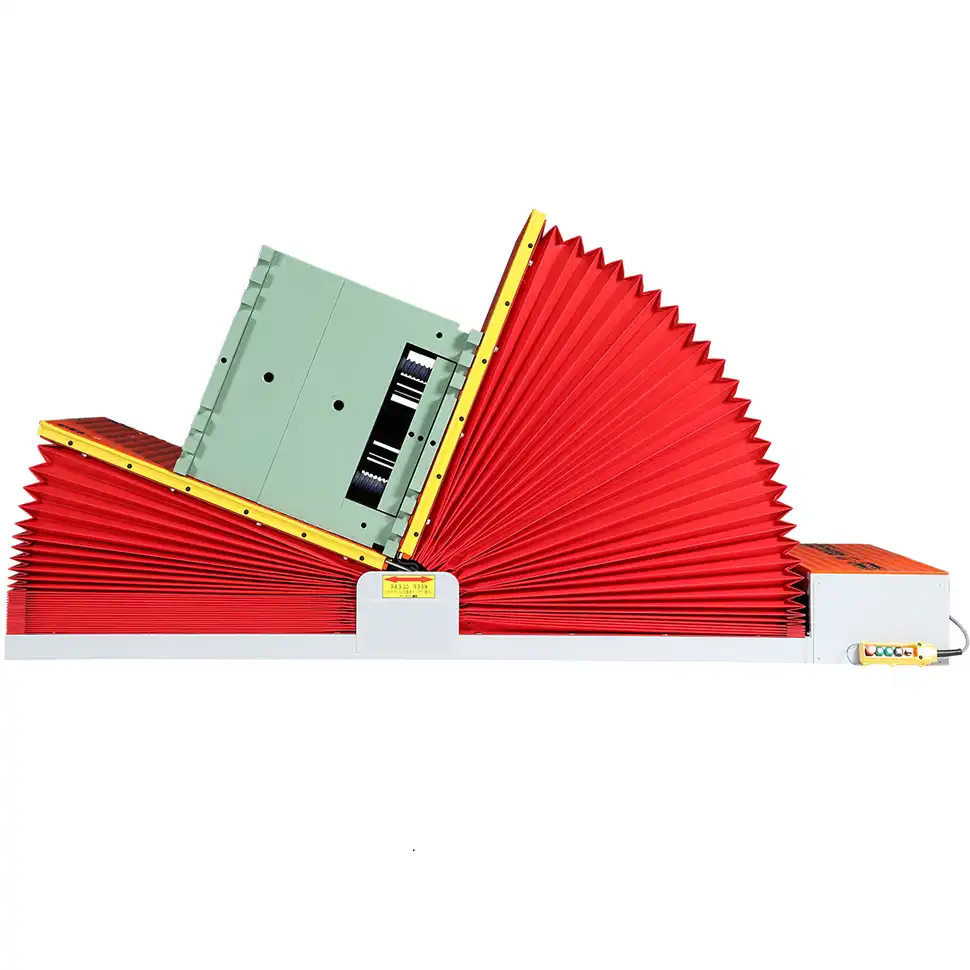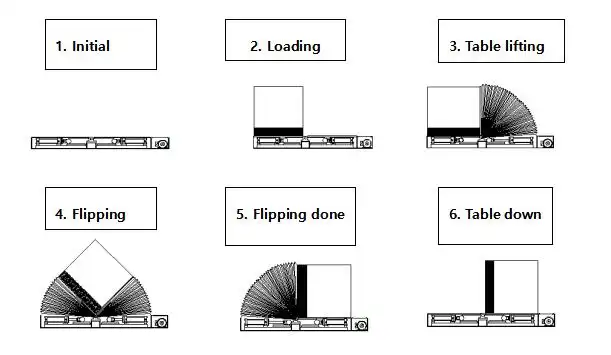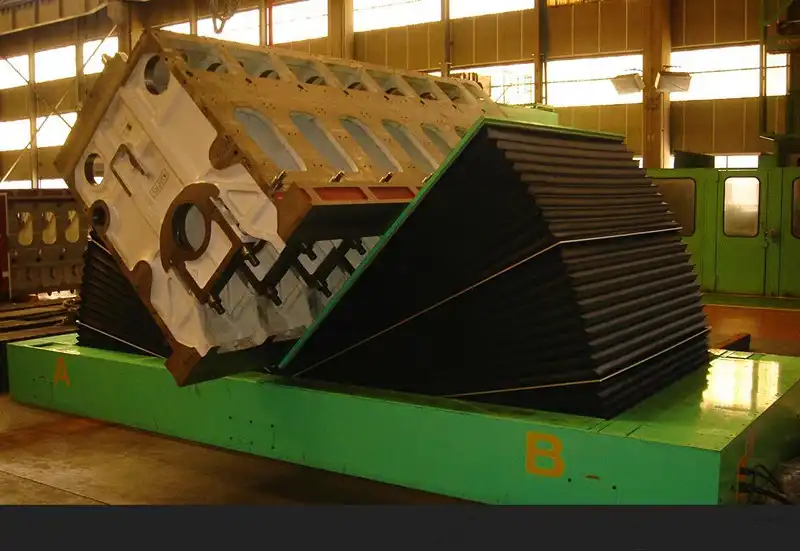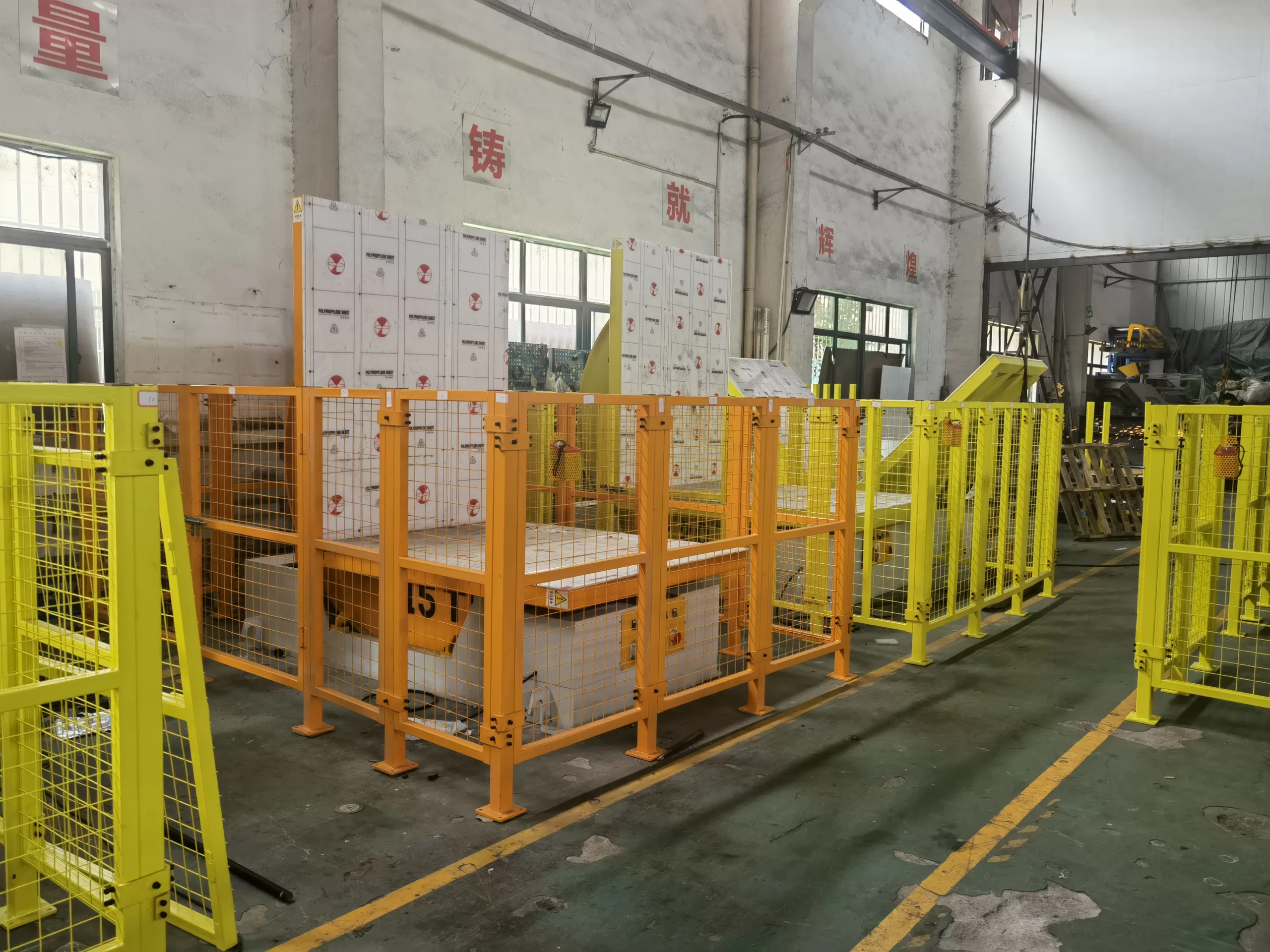Mold Flipper: What Payback Can Vietnam Plants Expect Under Two Shifts?
Running a busy manufacturing plant is a constant balancing act. You have to push for more output while keeping your people safe. You need to protect your expensive equipment but also meet tight deadlines. In my years in this industry, from an engineer on the floor to owning my own factory, I've seen this challenge firsthand. One of the most dangerous and inefficient processes I've witnessed is the manual flipping of heavy molds and dies. It’s slow, it’s risky, and it quietly costs companies a fortune in hidden expenses. This problem gets even bigger when you run multiple shifts, like many growing plants in Vietnam. You are doubling the risk and the inefficiency. The good news is there's a straightforward solution: a mold flipper. It’s a machine designed for one job—to turn heavy things over safely and quickly.
For a typical manufacturing plant in Vietnam operating on two shifts, a mold flipper can achieve a full payback in as little as 12 to 18 months. This rapid return on investment is driven by significant savings in labor costs, a dramatic reduction in equipment damage, and the prevention of costly workplace accidents.

I understand that a number like "12 to 18 months" can sound like a sales pitch. But as an engineer, I believe in data. As a factory owner, I believe in results. The true value of a mold flipper isn't just in one single benefit, but in how several small, consistent gains add up to a major financial and operational win. So, let’s break down the numbers. We will look at how this machine impacts your safety, your labor efficiency, and your bottom line. I want to give you the tools to do this calculation for your own plant, so you can see the real payback for yourself.
How does a mold flipper improve operational safety?
In any heavy industry, safety is not just a priority; it's the foundation of a stable business. I still remember an incident early in my career where a team was using an overhead crane and chains to flip a large die. A chain slipped. The die didn't fall completely, but it shifted suddenly. Luckily, no one was seriously injured, but the close call shut down that part of the plant for half a day. The fear and uncertainty it created lasted for weeks. This is the hidden risk many plants live with every day. Relying on cranes and manual coordination for such a heavy task is inherently unstable and puts your most valuable asset—your people—in danger.
A mold flipper dramatically improves safety by creating a controlled, automated turning process. It secures the workpiece on a stable platform and uses smooth, mechanical power to rotate it. This removes workers from the danger zone and eliminates the risk of dropped loads, crushing injuries, and other accidents associated with manual methods.

The Real Cost of an Accident
When we think about safety, it's easy to get lost in rules and regulations. But let's think about it like a business owner. An accident is not just a human tragedy; it's a major business disruption with clear financial costs. These costs go far beyond the immediate medical bills. You have to account for lost production time, potential damage to the equipment, and the time your managers spend investigating the incident and filing reports. There are also less obvious costs, like rising insurance premiums and potential government fines. A single serious incident can easily cost tens of thousands of dollars, completely erasing the profit from weeks of hard work. For a plant in Vietnam running two shifts, the number of mold flips doubles, and so does the exposure to this risk.
Creating a Safer, More Productive Culture
A mold flipper does more than just prevent the worst-case scenario. It builds a better work environment. When your team knows that you are investing in equipment to make their job safer, it boosts morale and trust. They can focus on their primary tasks without the background anxiety of a dangerous procedure. This leads to higher productivity and better employee retention. In a competitive labor market, a strong safety record becomes a selling point. It helps you attract and keep skilled, responsible workers who are the backbone of any successful manufacturing operation. The table below shows a simple comparison, but the real difference is in the peace of mind it brings to the entire factory floor.
| Safety Metric | Manual Flipping (Crane & Chains) | Mechanical Mold Flipper |
|---|---|---|
| Risk of Injury | High (Crushing, dropping, slips) | Extremely Low (Automated process) |
| Operator Proximity | Workers in direct contact or near the load | Operator at a safe distance control panel |
| Process Control | Low (Depends on crane operator skill) | High (Consistent, smooth, predictable) |
| Potential for Failure | High (Sling failure, load imbalance) | Low (Mechanical and safety interlocks) |
| Impact on Insurance | Can lead to higher premiums | Can help lower insurance premiums |
Investing in a mold flipper is investing in stability. It transforms a high-risk task into a routine, safe, and predictable part of your workflow.
What are the direct labor and efficiency gains?
Time is money. We all know this, but it’s amazing how much time gets wasted in small, inefficient tasks that we've just "always done that way." Flipping a mold with a crane is a perfect example. You need a certified crane operator, who has to stop whatever they were doing. You also need at least one or two people on the ground to rig the chains and guide the load. The entire process is slow and deliberate because it has to be—it's dangerous. For 15 or 20 minutes, three skilled people are tied up in a single, non-value-added task. If you're running two shifts, this happens multiple times a day. That lost time is production time you can never get back.
A mold flipper transforms the mold-turning process from a multi-person, 20-minute task into a one-person, 3-minute operation. This frees up your crane and your skilled workers to focus on core production activities, directly boosting overall plant efficiency and output.

A Clear Look at Labor Savings
Let's put some real numbers to this. The math is simple but powerful. We can estimate the cost of the manual method versus the mold flipper method. For a plant in Vietnam, let's assume an average skilled labor cost, including overheads, of around $5 USD per hour per person. A crane operator might be slightly more. For simplicity, we’ll use the $5 figure for everyone.
Now, let's compare the two methods for a single mold flip.
| Metric | Manual Flipping (Crane & Chains) | Mechanical Mold Flipper |
|---|---|---|
| Workers Required | 3 (1 crane operator, 2 ground crew) | 1 (machine operator) |
| Time per Flip | 20 minutes (0.33 hours) | 3 minutes (0.05 hours) |
| Total Labor Hours per Flip | 3 workers * 0.33 hours = 1.0 labor hour | 1 worker * 0.05 hours = 0.05 labor hours |
| Labor Cost per Flip | 1.0 labor hour * $5/hour = $5.00 | 0.05 labor hours * $5/hour = $0.25 |
| Cost Savings per Flip | $4.75 |
This might not seem like a huge number on its own. But let's say your plant flips 5 molds per shift. On a two-shift schedule, that's 10 flips per day.
Your daily savings would be 10 flips $4.75/flip = $47.50.
Over a month (22 working days), that's $47.50 22 = $1,045 in direct labor savings alone.
The Bigger Picture: Unlocking Your Crane
The savings go far beyond just the direct labor cost. The biggest bottleneck in many factories is the overhead crane. It’s used for everything: moving raw materials, loading finished goods, and, of course, maintenance tasks like flipping molds. When your crane is busy with a slow, 20-minute mold flip, it's not doing anything else. Other production machines might be sitting idle, waiting for material. Your shipping department might be waiting to load a truck. By reducing the flip time to 3 minutes, you give back 17 minutes of valuable crane time for every single flip. Over a day with 10 flips, that's almost three hours of extra crane availability. This increase in crane capacity can smooth out your entire production flow, reduce bottlenecks, and directly contribute to higher overall plant output without any other changes.
How does a mold flipper protect your expensive molds and dies?
I've seen companies spend anywhere from $10,000 to over $100,000 on a single, high-precision mold. These are not simple chunks of steel; they are carefully engineered tools that define the quality of your final product. Yet, every day, these valuable assets are put at risk by using chains and cranes to turn them over. When you lift a mold with chains, you are putting immense pressure on small contact points. The lift is often uneven, causing the mold to swing or jerk. This can easily lead to dents, scratches, or chips on the critical mold surfaces. Even worse, it can knock precision guide pins out of alignment. A small amount of damage can lead to big problems: poor quality parts, increased scrap rates, and eventually, the need for expensive repairs or a complete replacement of the mold.
A mold flipper protects your investment by handling molds with care and precision. It supports the entire weight of the mold on a flat, stable platform and uses a smooth, controlled motion to turn it. This eliminates impact damage, prevents stress fractures, and significantly extends the working life of your valuable molds and dies.

The High Cost of Mold Damage
Damage to a mold isn't just an inconvenience; it's a direct hit to your profitability. The costs can be broken down into several categories, and they add up quickly.
- Direct Repair Costs: The most obvious cost is sending the mold out for repair. This can involve welding, re-machining, and polishing. For complex molds, these repairs can cost thousands of dollars and take weeks to complete.
- Production Downtime: While the mold is being repaired, the machine it belongs to is sitting idle. This is lost production capacity. If you have to stop a production run to fix a damaged mold, the costs multiply.
- Reduced Product Quality: Even minor, unnoticed damage can affect the final product. This can lead to higher scrap rates or, worse, defective products reaching your customer. This hurts your reputation and can lead to costly returns.
- Reduced Mold Lifespan: Every time a mold is handled roughly, its life is shortened. The cumulative effect of many small impacts and stresses means you will have to replace that expensive asset much sooner than planned.
The table below shows how these costs can escalate.
| Type of Damage | Potential Repair Cost | Estimated Downtime Cost | Total Impact |
|---|---|---|---|
| Minor Surface Scratch | $200 - $500 | $1,000 (4 hours downtime) | $1,200 - $1,500 |
| Chipped Corner/Edge | $1,000 - $2,500 | $5,000 (1 day downtime) | $6,000 - $7,500 |
| Misaligned Guide Pin | $2,500 - $5,000 | $12,500 (2-3 days downtime) | $15,000 - $17,500 |
| Major Crack | $10,000+ or Replacement | Varies (weeks of downtime) | $20,000+ |
Consistency is Key to Profitability
A mold flipper isn't just about preventing catastrophic damage. It's about maintaining consistency. By handling the mold the same way, every single time, you protect its precise calibration. This means your production process is more stable. Your quality control becomes easier because you have fewer variables to worry about. You produce less scrap and have more consistent output. In a high-volume, two-shift operation, a small reduction in the scrap rate can lead to huge savings in material costs over the course of a year. Protecting your mold is a direct investment in the quality and profitability of your entire operation.
How do we calculate the precise payback period for a Vietnamese plant?
So far, we've talked about the benefits in separate pieces: safety, labor, and asset protection. But to make a smart investment decision, you need to bring it all together into one number: the payback period. As an owner, you need to know how long it will take for this new machine to pay for itself and start generating a profit. The process can seem complicated, but it's really just a matter of adding up all the monthly savings and dividing the total investment cost by that number. Let's walk through a realistic example for a plant in Vietnam running two shifts. This will give you a clear template to calculate the ROI for your specific situation.
To calculate the precise payback period, you first sum all your monthly savings—from reduced labor, increased production uptime, and avoided mold repair and accident costs. Then, you simply divide the total purchase and installation cost of the mold flipper by this total monthly savings figure.

Building Your Own ROI Model
To get an accurate picture, you need to be honest about your current costs. For this example, we will use some conservative estimates. Feel free to substitute these numbers with the real data from your own factory floor. The more accurate your inputs, the more reliable your final payback calculation will be.
First, let's establish the initial investment. The cost of a mold flipper can vary based on size and capacity, but we'll use a realistic figure.
- Total Investment
- Mold Flipper Machine Cost: $20,000
- Shipping & Installation Cost: $2,000
- Total Initial Cost: $22,000
Next, let's calculate the total monthly savings. We'll pull from the topics we've already discussed.
| Savings Category | Calculation | Estimated Monthly Savings |
|---|---|---|
| 1. Labor Savings | $4.75 saving per flip 10 flips/day 22 days/month | $1,045 |
| 2. Efficiency Gain | 17 min crane time saved/flip 10 flips/day = 2.8 hours/day. Assume crane time value is $50/hr. 2.8 hrs $50/hr * 22 days/month. Let's be conservative and take just 10% of this potential. | $308 |
| 3. Avoided Mold Repair | Assume one minor mold repair ($1,500 cost) is avoided every 4 months. $1,500 / 4 months. | $375 |
| 4. Avoided Accident Cost | A single major incident can cost $20,000+. If a flipper prevents just one such incident over 5 years, the monthly value is $20,000 / 60 months. | $333 |
| Total Monthly Savings | $2,061 |
Calculating the Final Payback Period
Now for the simple part. We take the total investment and divide it by the total monthly savings.
Payback Period = Total Investment / Total Monthly Savings
Payback Period = $22,000 / $2,061 per month
Payback Period ≈ 10.7 months
As you can see, even with conservative estimates, the payback period is less than a year. For a Vietnamese plant running two shifts, the high frequency of mold changes rapidly accelerates the return on investment. If your labor costs are higher, your molds are more expensive, or you change molds more frequently, your payback period will be even shorter. This calculation transforms a mold flipper from a "cost" into a clear and profitable investment in your plant's future.
My Insights
When I first started my own factory, I faced the same kind of decisions that I imagine a leader like Javier Morales faces every day. Every dollar counted. Every investment had to be justified, not with feelings, but with numbers. The biggest shift for me, going from an employee to an owner, was learning to see beyond the initial price tag of a machine. I had to learn to see the total cost of not having the right equipment.
Javier is dealing with aging equipment, rising costs, and environmental pressures. These are not small challenges. A mold flipper might seem like a small piece of the puzzle, but it directly addresses the core of these problems in a very practical way.
- On Aging Equipment: You can't replace an entire production line at once. But you can make strategic, high-impact upgrades. The mold handling process is a weak link in many older plants. Fixing it with a mold flipper is a smart, targeted investment that modernizes a critical process and reduces the strain on your other aging equipment, like your overhead crane.
- On Cost Pressures: A mold flipper is a cost-reduction machine. It cuts labor waste. It cuts material waste by reducing scrap. It cuts maintenance waste by protecting your molds. These savings directly improve your profit margin and help offset other costs, like energy, that are harder to control.
- On Digital Transformation: A modern factory runs on data. A mold flipper is a step in that direction. Newer models can track usage cycles and operating hours, providing data for your predictive maintenance programs. It’s a simple machine, but it reinforces a culture of precision, control, and data-driven operation, which is the foundation of a smart factory.
Most importantly, Javier is looking for a strategic partner, not just a supplier. This resonates with me deeply. I built SHJLPACK on the idea of being a partner. "TOTAL SOLUTION FOR WRAPPING MACHINE" is not just a slogan; it's our promise. It means we don't just ship you a machine. We help you analyze your process, we walk you through the ROI calculation, and we make sure the solution fits your specific goals. For us, the relationship only begins with the sale. It continues as we help your business grow, just as this industry has helped me.
Conclusion
For Vietnamese plants on two shifts, a mold flipper is not an expense. It's a strategic investment with a fast, measurable payback in safety, efficiency, and asset protection.





